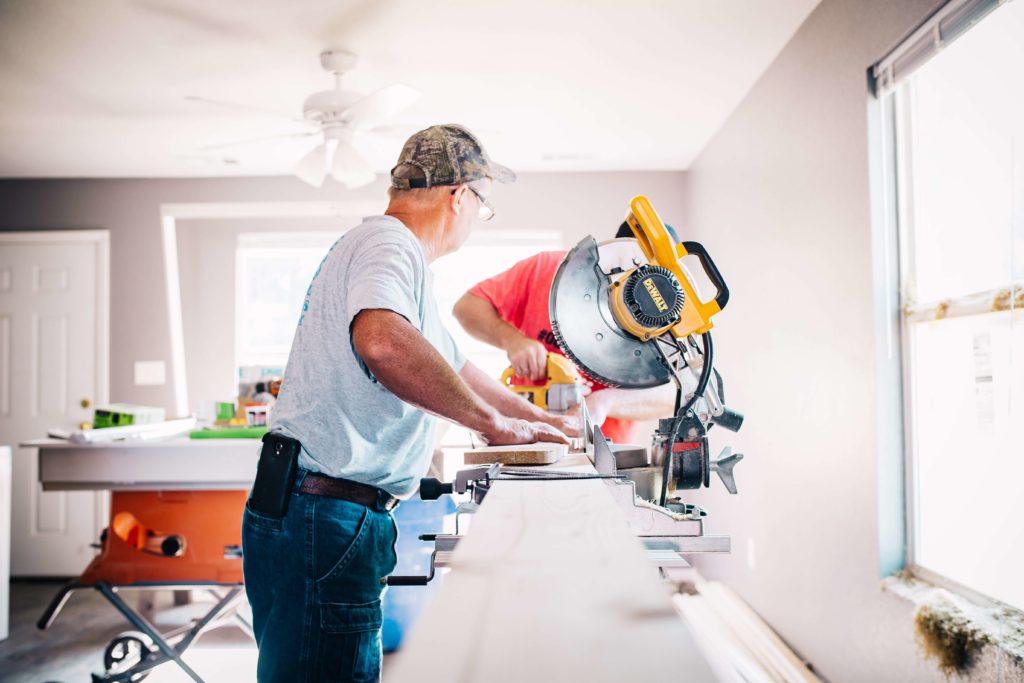
After some brilliant renovating tips from Josh Barker last month, we thought it was high time we talked about the cost of renovating and how to go about organising finance if you decide to give your home a facelift or plan on flipping properties.
Lots of people watch TV renovation shows and get caught up in the excitement of a) renovating their own home or b) flipping properties. The problem with thinking you can DIY your reno (or an investment property) is that a lot of the work requires licensed and highly skilled people to carry it out.
We won’t go into the costly mistakes you can make when trying to plaster your own ceiling. Or why it’s not a great idea to try to connect your own water. Instead we wanted to have a look at the financial side of things and how to flip properties a la The Block.
Flipping properties
We Aussies love property. And there are a number of people that make good money through the property market. Whether it be through capital growth, rental income or renovating and selling for a quick profit.
If you’re renovating and need finance then you might be surprised to learn you’ll have to take out a construction loan if you’re spending $100k or more.
This means throughout the process you will draw down parts of the loan (rather than the whole amount) to pay for construction as it progresses. You will be required to make repayments on the loan, although its usually interest only for the first 12 months.
Here’s something really important to think about: there are some pretty big costs attached to buying and selling property. Most people make the mistake of oversimplifying; the true cost and therefore profit is tied into a range of things including interest paid on any loans, overall buying, renovating and selling costs. So don’t just calculate it based on your selling price minus your buying price = profit, there’s a lot more to consider in your equation.
Your budget
The most important thing (we think) is to set yourself a reasonable and realistic budget from the outset. When someone applies for any home loan we complete a borrowing capacity calculator, where we input all of the income and expenses to determine how much a person can afford to borrow.
If you are planning on renovating and selling a property in addition to the purchase, then you need to incorporate these costs into your budget too, or to capitalise some of these costs into the loan so you’re not scrabbling around trying to find the money to cover these expenses.
Buying costs
When buying a property in Victoria there are a range of things you’ll need to cover, which include:
- Stamp duty
- Mortgage registration fee
- Transfer fee
- Title search fee
- Conveyancing
- Lenders Mortgage Insurance (if borrowing greater than 80% of the property value)
- Bank fee
- Building & Pest Inspection
- Home Insurance
- Rates
- Removalist fee
Check out our Buy & Sell Costs Calculator to calculate what your purchase costs will look like.
Renovation costs
Renovation costs is a tricky one, this can be a lot or a little depending on what you are planning to do. If you’re making structural changes or renovating wet areas and the kitchen then the renovation is going to be on the pricey side. If you’re just planning on painting or other cosmetic changes, then these costs might be pretty minimal.
A general rule of thumb is to spend no more than 5-10% of the overall value of the property on renovations, especially if you are planning on selling the property quickly.
Selling costs
When you sell, there are of course another raft of fees and costs you’ll be required to pay:
- Repay your loan
- Real Estate Agent commission
- Advertising/marketing fee
- Auction fee (if selling at auction)
- Mortgage discharge fee
- Bank loan discharge fee
- Conveyancing fee
- Removalist fee
- Capital Gains Tax
You’ll see Capital Gains Tax listed there. If you have not held the property for at least 12 months then you’ll pay the full Capital Gains Tax rate. If you’ve had the property for at least 12 months then you get a 50% discount on the Capital Gains Tax payable. Finally, if you’ve lived in the property as your Principle Place of Residence (PPR) then you might be eligible for an exemption. So be sure to bear this in mind when thinking about flipping properties.
Check out our Buy & Sell Costs Calculator and pop your details in to see what your selling costs might look like.
Disclaimer: This article in no way constitutes advice and we recommend you seek professional guidance via a qualified and registered professional when it comes to tax treatment of investment properties.


